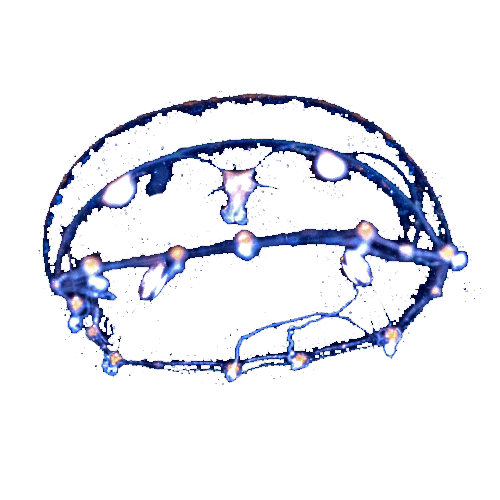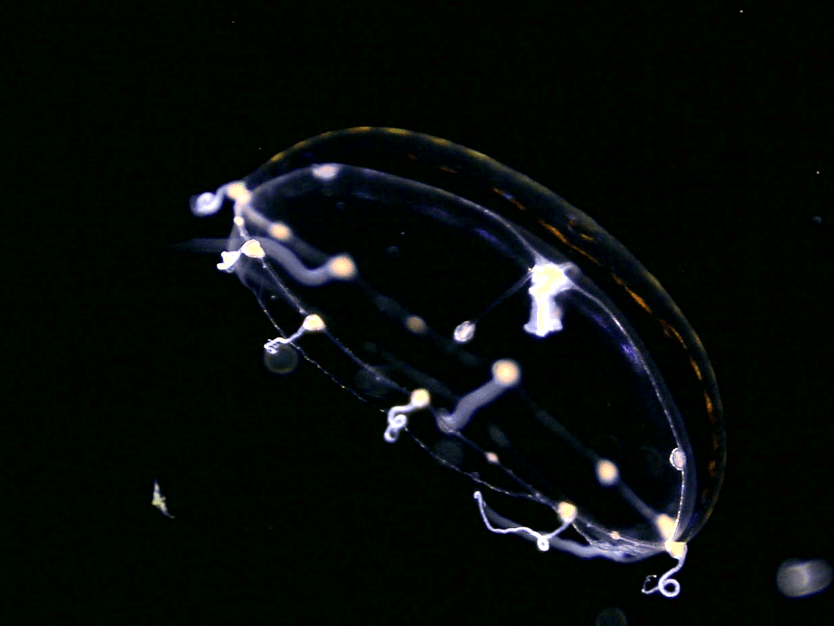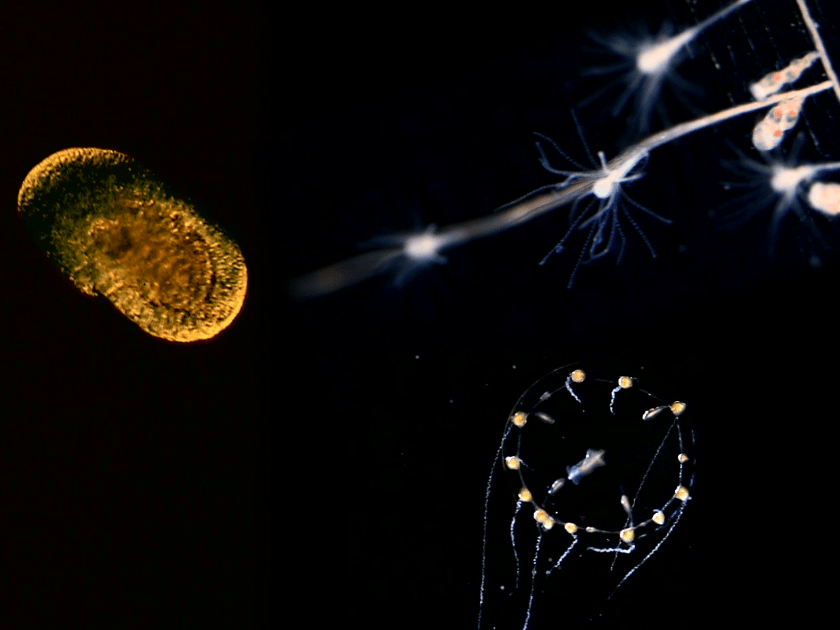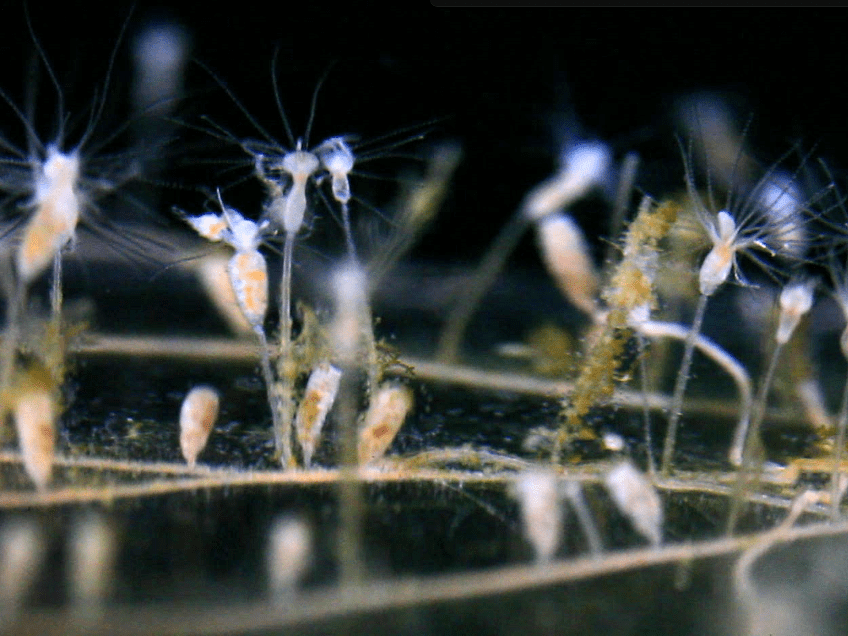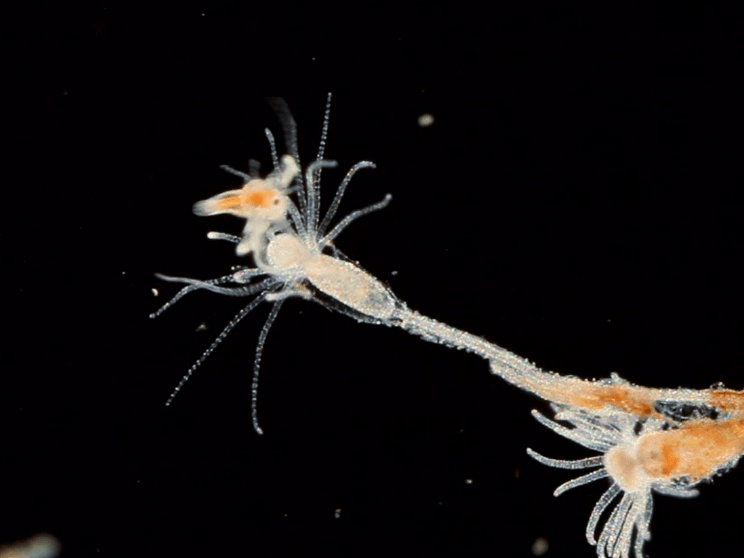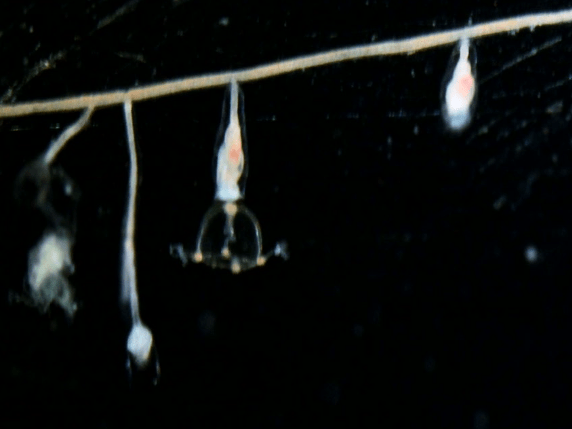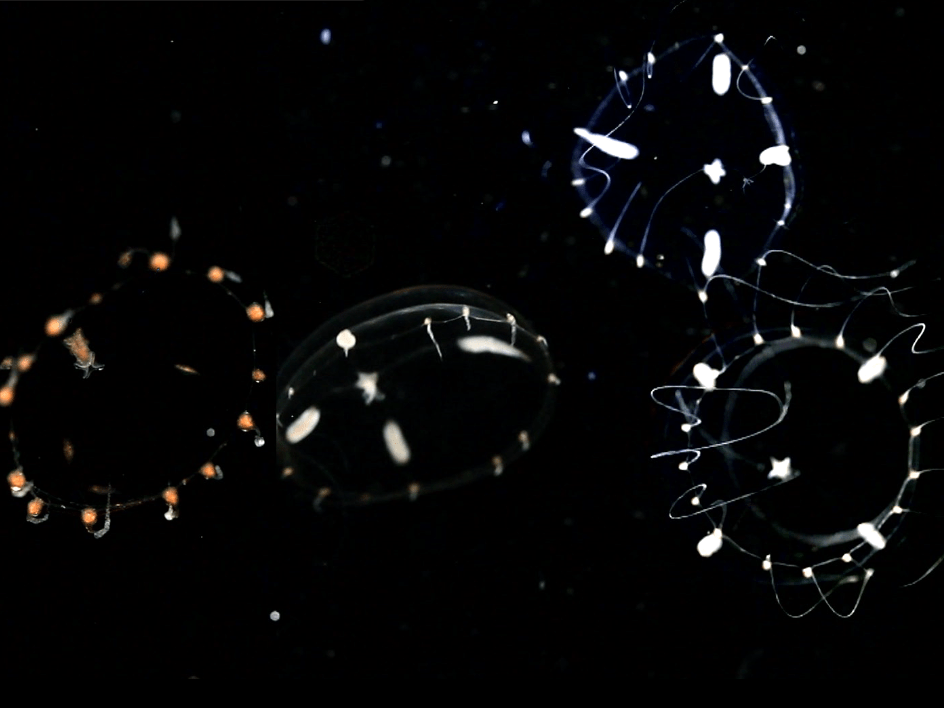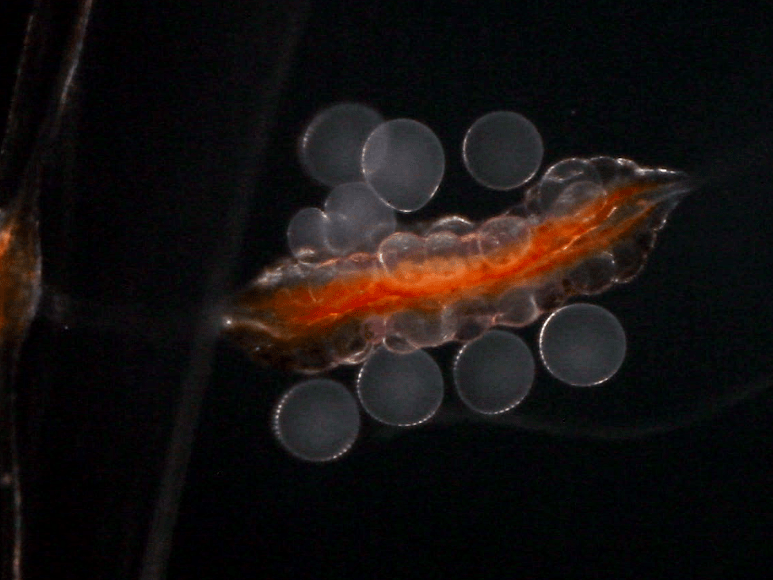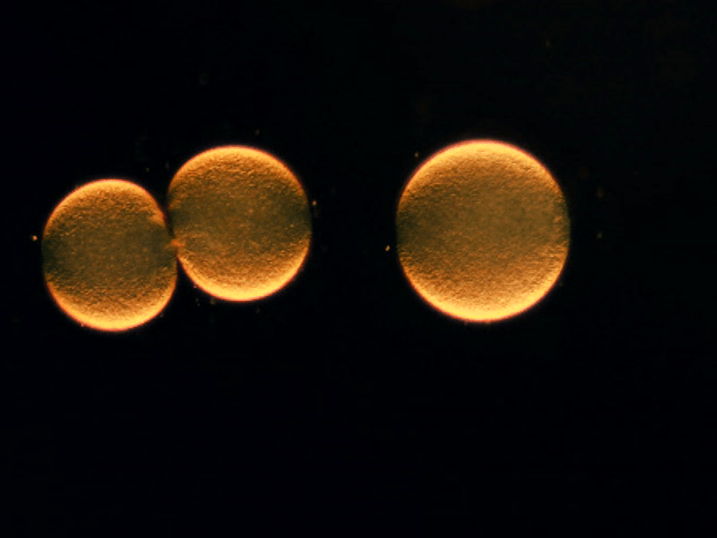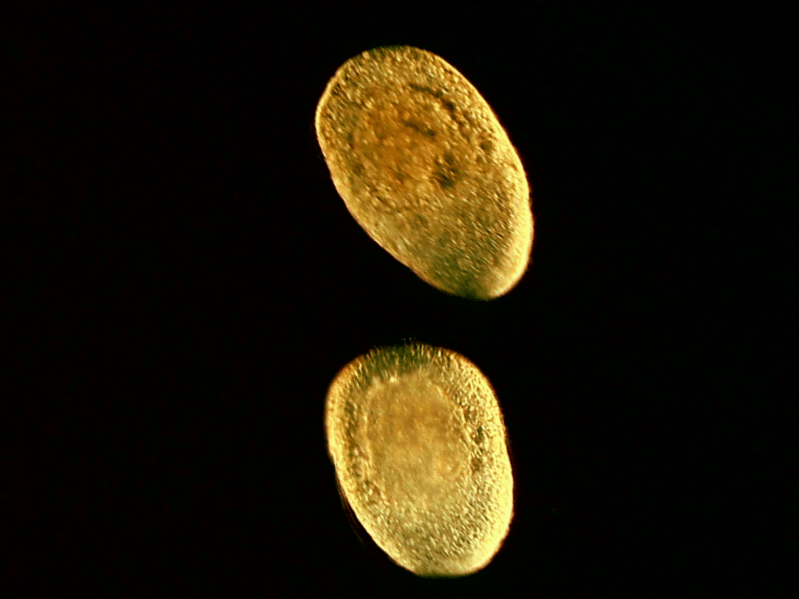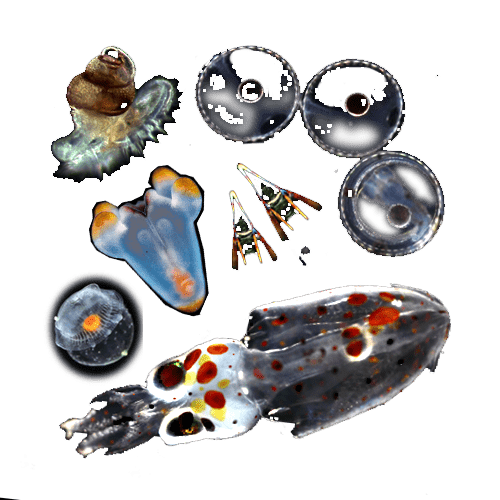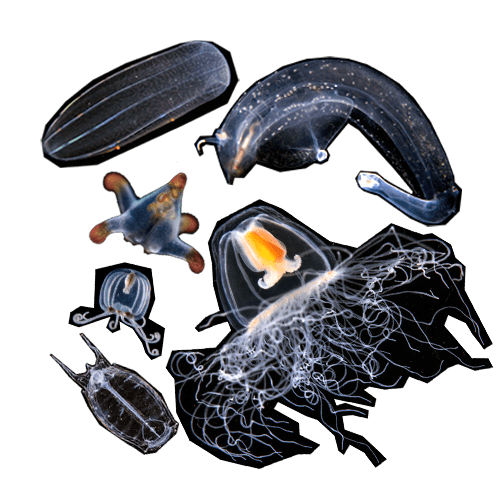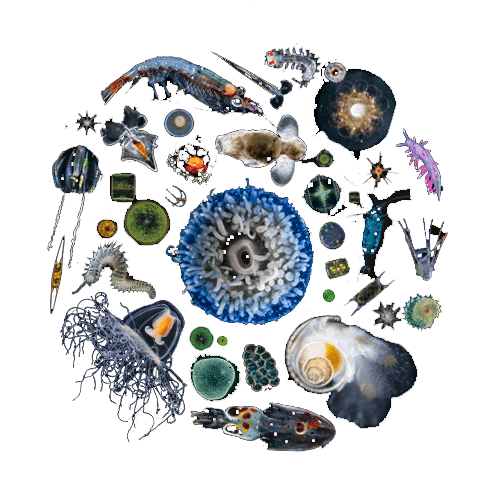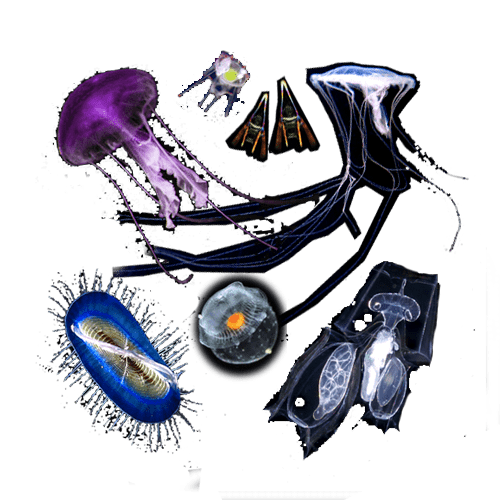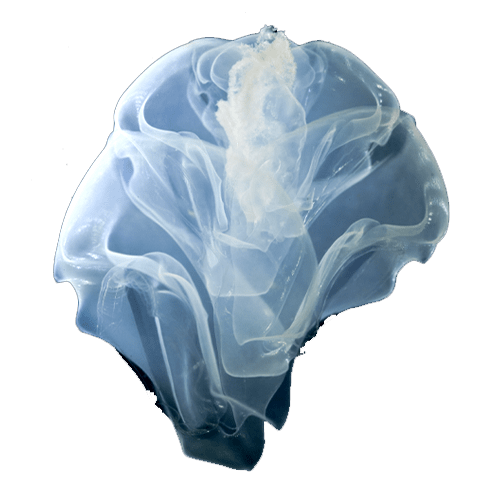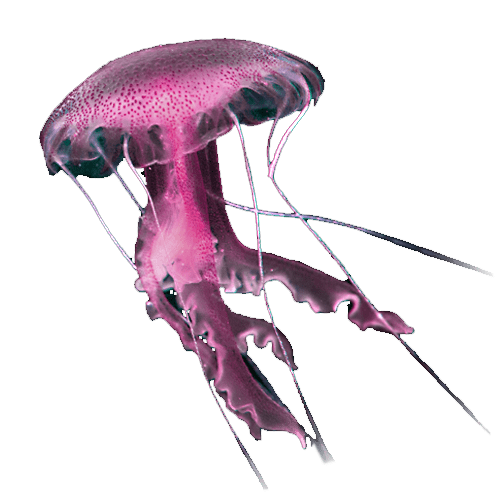In this episode
 Siphonophores
Siphonophores ClytiaClytia hemispherica
ClytiaClytia hemispherica Velella larvaVelella velella
Velella larvaVelella velella Anthozoan larva
Anthozoan larva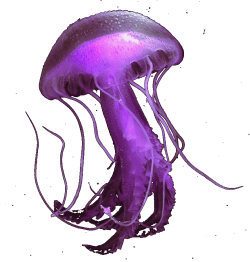 PelagiaPelagia noctiluca
PelagiaPelagia noctiluca
Photos
Narration
Clytia hemispherica, is a tiny jellyfish found in all the world’s oceans. But you have to look closely because Clytia measures only 5 to 20 millimeters. Easy to raise and propagate, this delicate jellyfish is becoming a favorite laboratory organism for studying life cycles and gene functions. Clytia’s full genome sequence is now known, and its DNA will soon hold no more secrets.
Clytia are born from a network of polyps, gelatinous sacs armed with tentacles, and fixed on algae, rocks or sea shells. They live in colonies of polyps, feeding themselves by capturing small shrimp or other prey with their stinging tentacules. Certain polyps specialize in reproduction, budding off baby jellyfish. When they’re ready, Clytia pop out and start drifting.
Everyday at dawn, a strange effervescence brews in the sea. Under their transparent umbrellas, male Clytia and female Clytia release sperm or eggsfrom little sacs.They mingle, fertilize, and develop into called planula larvae. Planula glide through the water, propelled by hair-like cilia. They drift until they reach their goal: to settle and form a new polyp colony. And so the cycle continues
Share this on
Production
CNRS
Original Idea
Christian Sardet
Director
Sharif Mirshak
Texts
Christian Sardet, Sasha Bollet
Images
Christian Sardet, Sharif Mirshak, Noé Sardet
Editing
Sharif Mirshak
Voice
Sacha Bollet
Creative Commons Licence :
Attribution Non-Commercial
No Derivative

